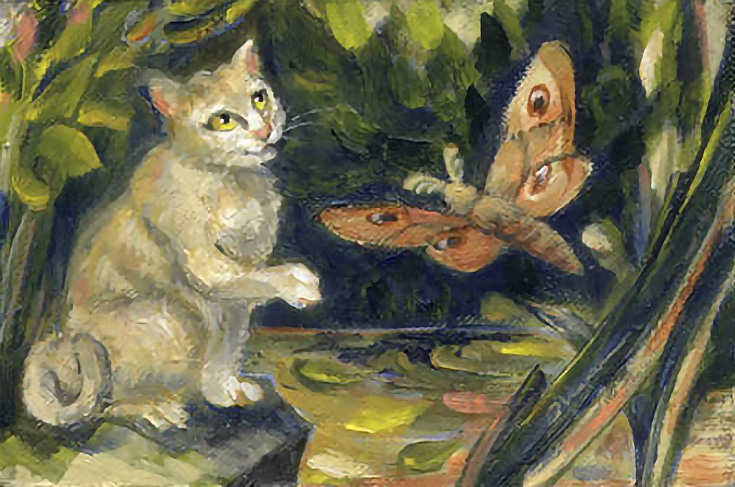When I used to do a lot of clay sculpture I got to the point where I didn’t need much reference—usually I’d just sculpt things straight out of my head. After I started painting, I tried doing that purely from my imagination as well, only to find it much more difficult.
With sculpture, I didn’t have to deal with foreshortening, chiaroscuro (light/shadow), and composition. As I tried painting from my imagination, these three aspects of painting confounded me. I realized I was out of my depth, if you’ll pardon the pun.
Conversely, I found painting from life the simplest way to go. You can always find reference by setting up a still life, or going outdoors to paint, or painting from a live model. But what if you want to use compositions from your own imagination?
Photographic reference is good, but photos don’t always supply everything you might need for a project. Sketching from life is great, but there are some things that just won’t hold still long enough.
The solution that I came up with was to make a sculptural reference and create a little scene, or diorama, to paint from. For example, when I wanted to do this small, whimsical painting of a cat playing with a moth. . .
. . . I started off by sculpting a cat from sketches of my two cats and other photos.
Then I picked out a moth from Animals, by Dover Publications, which has copyright-free reference for artists. (Although whenever I am using reference such as clip art or photos I always change it around to keep my work original.)
I made a model of the moth using a clay body and cardboard wings, and set up the models in a box with some greenery—the boxwood hedge from our yard had tiny leaves, just the right size.
As you can see, I also added a small pan of water for the pool then painted directly from the diorama.
You should know that there are three kinds of clay that can be used to sculpt from, with advantages and disadvantages to each: pottery clay, which is water based, poly clay, and plastiline clay, which is oil based. The advantage of pottery clay is that it can be kiln fired, making the model permanent. Poly clay can be made permanent too, if it is oven baked. The advantage of plastiline clay is that it never dries out, so the same figure can be adjusted. I use both pottery clay and plastiline clay.
Sculpting your own reference may sound like more work, but the truth is that creating your own models will often save time and frustration. For instance, last year I had a 24 hour deadline for an illustration of a hang glider. The photo references I had were baffling, and I didn’t see how I could use them without running into copyright issues.
I accomplished the task by making a model of a hang glider out of cardboard and wire, with a tiny clay figure of a man. I used several photos for reference for the model, and ended up designing my own hang glider (I have no idea if my design would actually fly). The model was fun to make, and easy to draw—and I made my deadline.
Commercial figurines and toys also make good 3D reference (again, they should be changed for the sake of originality) but there’s nothing like sculpting your own models. Your own style comes through and you can light sculptural models any way you want or reuse them for other projects.
If you’ve never sculpted before, don’t worry—all you need is a book to inform you of the technical aspects of that kind of clay, or take a sculpture course or two. And once you’ve made the models, placing them inside a diorama makes it easier to come up with a good composition.
Theresa Bayer contributes to HowToBeAChildrensBookIllustrator.com and has her own blog at tbarts.blogspot.com. You can see more of her art at tbarts.com.
This post may contain affiliate links.


